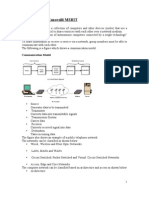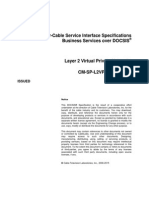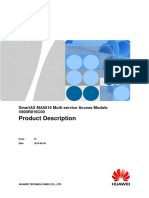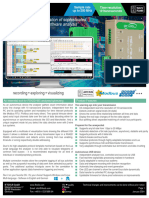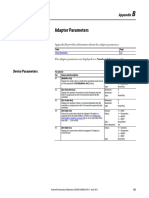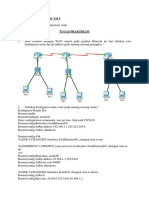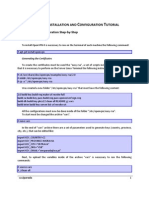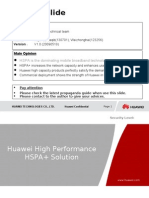Network components
Setting up a client/server network is easier then you might think. There are several basic
components, some of which are optional.
1) Desktop computers
Identify the desktops or workstations you would like to network.
2) Server
Purchase a server with the writing processing power as well as expendability and
availability and features you meet business and number of users.
3) Cables/Transmission
Connect workstation together and to the server with cables. The cable serves as
the conduit along with data is send between devices, cables can range from a
twisted pair, coaxial wire and a fiber optic cable.
4) Network Interface Card
A “NIC” or Network Interface Card is a broad level product that fits to a PC,
workstation, or server that allows the computer to talk to the rest of the
network. A NIC is the most common component in the network. At least one NIC
must be installed in every system attached to the network. The NIC is an
expansion board that allows the workstation or server to attach to a common
connection types are RJ45, BNC and SC connectors.
NIC also called network adapters. Include a cable socket allowing computer to be
connected to the computer. NIC’s are part of both the physical and data link
layer and include a unique data link layer and include a unique data link layer
address (some times called a MAC address) place in them by their manufacturer.
Before sending data on to the network the network card also organizer data into
frames and then sends them out on the network.
5) Software (Network Operating System)
Some type of networking software is required to facilitate to communicate
among the workstation. A network operating system runs on the server And
allows user to share information and peripherals that are attached to the
network. In addition each workstation must run client software in order to
communicate with the server.
6) Hubs
In general, a hub is the central part of a wheel where the spokes come together.
The term is familiar to frequent fliers who travelled through hubs to make
connecting from one point to another. In data communications a hub is a place
of converence where data arrives from one or more other directions. The
distinction seems to be that the hub is the place where data comes together and
8
� the switch is what determines how and where data is forwarded from the place
where data comes together. Hub works at Layer 1, the Physical layer.
7) Switch
In a telecommunication network, a switch is a device that channels incoming
data from any one multiple input ports the specify output port that will be take
the data toward its intended destination. On the Ethernet local area network, a
switch determine from the physical device address in each incoming message
frame which output port to forward it to and out of. Switch works at Layer 2,
the Data link layer.
8) Repeaters
Repeater is a signal amplification device. As an electronic signal travels down a
wire it weakens in strength. In electronic jargon this is known as attenuation.
Repeaters are place at pre determined points along the cable and act to boost
and retransmit to signal. This is like giving a runner a bower bar or drink to
crucial points in a race.
9) Bridges
A network bridge, also known as an Ethernet bridge, connects two segments of a
network together. The segments are not independent entities, but are owned
and managed by the same organization.
The bridge will either pass network traffic or deny network traffic based on the
destination address. On the other hand if the destination address is one another
segment the bridge will allow the traffic to pass through in order to reach its
destination.
10) Routers The router is considered to be an intelligent network device. It performs
basically 02 functions. First, it provided the physical connection between two or more
different network. The second and major function is to route packets of network
information between different networks. Hence the name “Router” the router also has
the intelligence build into dynamically adapt to changes in the network configuration
and to route traffic around downed links.
By implementing a number of routers to connect several smaller networks
together. A larger entity known as an integer network is created. When a
computer located on one network wants to sent data to a device located on a
remote network, the data is post to a router located on the local segment. The
local router will then forward the data packet to the destination device on the
network.
9
� 11) Brouter
A brouter is a hybrid device, as its name would imply, combines the both a
bridge and a router into one device. It will function as a router in most cases.
12) CSU/DSU(Channel Service Unit/Data Service Unit)
A CSU/DSU is a hardware device about a size of external modem. That converts
digital data frame from the communication technology used on a LAN in to a
frame appropriate to a WAN and Voice Versa. A channel service unit and
receives and transmit signal from and to the WAN line and provides a barrier for
electrical interference from either site of the unit. The DSU manages timing
errors and signal generation.
Networking models
LAN (Local Area Network)
A LAN is a group of computers and associated devices that share a common communication
lines or wireless link and typically share the resources of a single processor or server within a
small geographic area (for an example within an office building) usually, the server has
applications and data storage that are shared in common by multiple computer users. A LAN
may serve as two or more users.
MAN (Metropolitan Area Network)
A MAN is a network that inter connects users with computer resources in a geographic area or
region larger than that convert even a large local area network but smaller than the area
covered wide area network. The term is apply to the inter connection of networks in a city into
a single lager network. It is also used to mean the inter connection of several LANs by bridging
then with backbone lines. The later usage this also sometime referred to as a campus network.
WAN (Wide Area Network)
A WAN is a geographically dispersed telecommunications network. The term description a
browder telecommunication structure from a LAN. A WAN may be privately owned or rented,
but the term usually connects of inclusion of public network. An intermediate from network is
an MAN.
10
�Network design
Computer networks also differ in their design. Two types of high level network design
are called “Client – Server” and “Peer – to – peer”.
Peer-to-peer
Peer to Peer networks, also called
workgroups were the first type of
network to be used. In this type of
network there is no centralized
management or security and each
computer is in charge of its own local
users and file and folder permissions.
Since there is no centralized user
management, any user who wants access
to resources on another computer will
need to have an account on that specific
computer. So if a user wants access to files on 10 different computers then that user will
need 10 separate user accounts.
The main advantage of Peer-to-peer networking is lower cost since there is no dedicated
server, generally the most expensive network component.
Client-server design
In a client-server networking
environment certain systems
are setup as a server, which
means that they serve
resources to other systems.
Servers can provide various
functions.
For an example, a server might
be setup as a print server in
order to manage the printing on
a network. Or a server might
play the role of a file server, hosting files on a network so that users can share and
access files were the network.
11
�Servers may also act as applications that are used on the network. Another important
role that is frequently performed by servers is to control security on the network to
ensure that only authorized users are able to access network resources. It is important
to note that the typically servers are the bigger, faster machine on the network and are
often dedicated servers that perform very specific functions, there are instances,
however when a server may act as both a server and a client.
Network topologies
Topology refers to the shape of a network, or the network’s layout. How different nodes
in a network are connected
to each other how they
communicate is determined
by a networks topology.
Topologies are either
physical or logical. There are
following types of
topologies, generally,
Bus topology
Star topology
Ring topology
Mesh topology
Tree topology
Bus topology
The bus topology consists of a long liner cable also called liner trunk or backbone. In this type of
topology all the computers are connected to this main cable. The data signal travels across the
cable medium from one end to another and if not absorbed at the other end, it will keep on
bouncing back and fourth across the
medium and therefore will stop any further
communication on the network.
A device called Terminator is used at one
end of the medium that absorbs the signal
and hence restricts it’s from effecting the
overall network communication.
12
�Star topology
In star topology, there is a central
network traffic management device
called hub/switch. All the nodes are
connected directly to the hub and are
thereby inter connected with each
other.
Ring topology
In ring topology the computers connected with
each other via a single cable run constitute a
logical ring. Ring is an active topology and also
that every computer on the ring act as a
repeater.
Malfunction is workstation and cables create
problems for the entire network. Changes
made when adding or removing a device effect a
either network.
Tree topology
A tree topology combines characteristics of liner bus
and star topologies. It consists of groups of stars
configure work station connected to a liner bus
backbone cable.
13
�Mesh topology
The mesh topology provides the highest level of
faculty tolerance. It uses separate cable to
connect each device to other device every other
device on the network, providing a straight
communication path.
14




















































